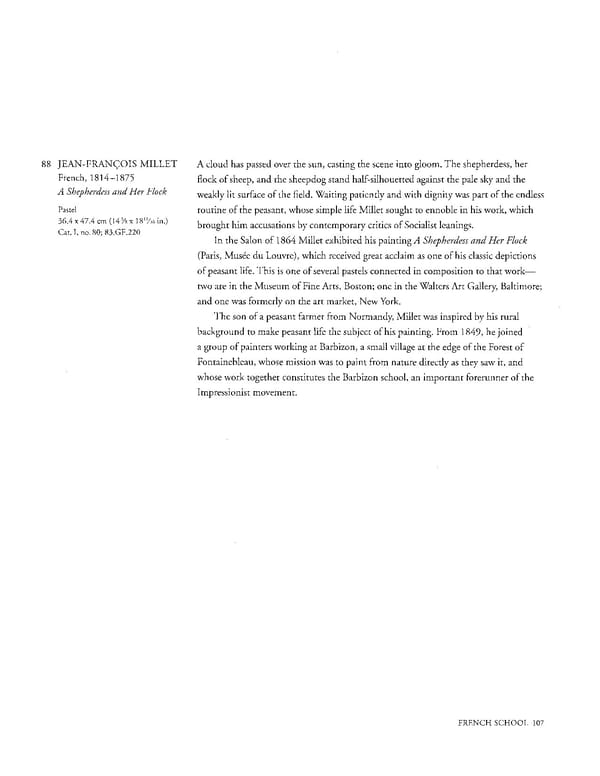88 JEANFRANCOIS MILLET A cloud has passed over the sun, casting the scene into gloom. The shepherdess, her French, 18141875 flock of sheep, and the sheepdog stand halfsilhouetted against the pale sky and the A Shepherdess and Her Flock weakly lit surface of the field. Waiting patiently and with dignity was part of the endless Pastel routine of the peasant, whose simple life Millet sought to ennoble in his work, which 36.4 x 47.4 cm (14 x 18 11/16 in.) brought him accusations by contemporary critics of Socialist leanings. Cat. I, no. 80; 83.GF.220 In the Salon of 1864 Millet exhibited his painting A Shepherdess and Her Flock (Paris, Musee du Louvre), which received great acclaim as one of his classic depictions of peasant life. This is one of several pastels connected in composition to that work— two are in the Museum of Fine Arts, Boston; one in the Walters Art Gallery, Baltimore; and one was formerly on the art market, New York. The son of a peasant farmer from Normandy, Millet was inspired by his rural background to make peasant life the subject of his painting. From 1849, he joined a group of painters working at Barbizon, a small village at the edge of the Forest of Fontainebleau, whose mission was to paint from nature directly as they saw it, and whose work together constitutes the Barbizon school, an important forerunner of the Impressionist movement. FRENCH SCHOOL 107
 Masterpieces of the Getty Museum: Drawings Page 107 Page 109
Masterpieces of the Getty Museum: Drawings Page 107 Page 109